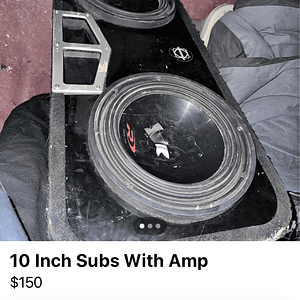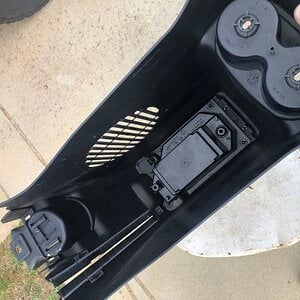By nature of its design, a loudspeaker is the largest waster of power by converting it to heat, undistorted or distorted.
Also what percentage of distortion must an amplifier reach in order to produce enough heat or DC voltage to cook a woofer? I ask because in my short history of owning an oscilloscope, 12v power supply, dummy loads, and a Fluke 117, I can't recall any torture test where a slight amount of clipping caused ANY amplifier tested on my bench to output a significant amount of DC that would ruin a driver. I guess I will check again with the Orion HCCA 225 Digital Reference that I am in the process of repairing, but I am not expecting the results to be any different. Come to think of it, maybe I need to add a distortion analyzer to my toy collection. //content.invisioncic.com/y282845/emoticons/biggrin.gif.d71a5d36fcbab170f2364c9f2e3946cb.gif
Then again, maybe I am giving too many individuals the benefit of the doubt by assuming that they know better than to overdrive the bejesus out of their amplifier while pushing nearly 40% distortion to their speakers.
Lastly, if an amplifier produces 1% distortion, like my Clarion DPX1851 is claiming to do on paper, and that higher distortion number kills subwoofers, why isn't my subwoofer dead?
Disclaimer: I am not an electrical engineer in real life nor do I pretend to be one on the internet. I am just a hobbyist/enthusiast who has more money than sense and the longing to learn as much as I can about whatever hobby of the moment I am involved in!
Also what percentage of distortion must an amplifier reach in order to produce enough heat or DC voltage to cook a woofer? I ask because in my short history of owning an oscilloscope, 12v power supply, dummy loads, and a Fluke 117, I can't recall any torture test where a slight amount of clipping caused ANY amplifier tested on my bench to output a significant amount of DC that would ruin a driver. I guess I will check again with the Orion HCCA 225 Digital Reference that I am in the process of repairing, but I am not expecting the results to be any different. Come to think of it, maybe I need to add a distortion analyzer to my toy collection. //content.invisioncic.com/y282845/emoticons/biggrin.gif.d71a5d36fcbab170f2364c9f2e3946cb.gif
Then again, maybe I am giving too many individuals the benefit of the doubt by assuming that they know better than to overdrive the bejesus out of their amplifier while pushing nearly 40% distortion to their speakers.
Lastly, if an amplifier produces 1% distortion, like my Clarion DPX1851 is claiming to do on paper, and that higher distortion number kills subwoofers, why isn't my subwoofer dead?
Disclaimer: I am not an electrical engineer in real life nor do I pretend to be one on the internet. I am just a hobbyist/enthusiast who has more money than sense and the longing to learn as much as I can about whatever hobby of the moment I am involved in!
Last edited by a moderator:



